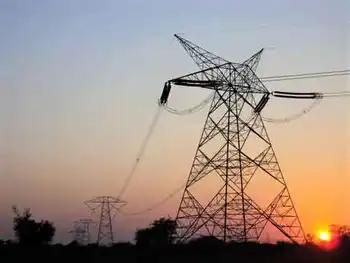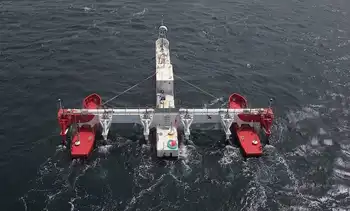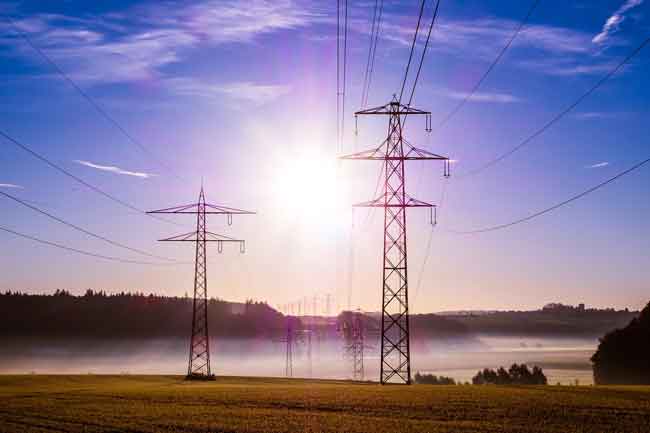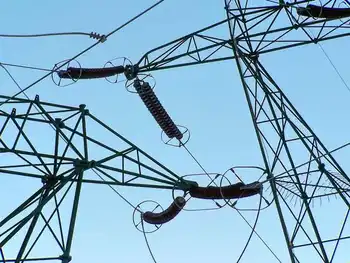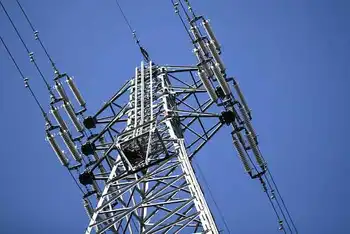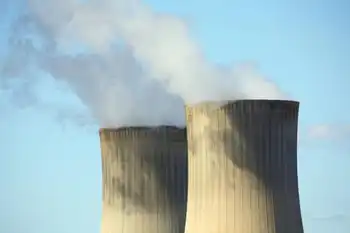The search for a nuclear graveyard
By Globe and Mail
CSA Z463 Electrical Maintenance
Our customized live online or in‑person group training can be delivered to your staff at your location.

- Live Online
- 6 hours Instructor-led
- Group Training Available
More than six decades after joining the nuclear club, Canada is home to 22 nuclear reactors, 18 of them in operation, producing about 15 per cent of the country's electricity. Canada also has 40,000 metric tonnes of radioactive waste - and counting.
For years, the issue of how to best dispose of this waste has plagued policy-makers, scientists and citizens. Suggestions have included shooting it into outer space or exporting it to the South Pole.
Now, Canada is preparing to get rid of its nuclear detritus once and for all - by burying it.
That solution will cost $16-billion to $24-billion, and it could take until 2020 just to choose a location. But if all goes well, millions of bundles of spent nuclear fuel will be buried half a kilometre underground in a complex network of subterranean rooms forever. Or at least until future generations come up with something better to do with it.
One niggling question remains: Where?
The multidecade, multibillion-dollar endeavour is the brainchild of the Nuclear Waste Management Organization, established by the federal government in 2002 to come up with a solution to the problem that has plagued Canada's nuclear-safety regulators since the 1940s - what to do with the waste that builds up as a result of all nuclear activity, and which continues to emit potentially harmful radioactive energy for decades, centuries or even millennia.
It's early days yet: Consultations are just beginning on how to select a location.
In May and June, those consultations took the form of town-hall meetings in 14 cities in Ontario, Quebec and New Brunswick - chosen, said NWMO spokesman Michael Krizanc, because they're "regional centres" in Canada's nuclear provinces.
When the information session came to Sudbury in late May, it became clear just how radioactive this issue will be - and how likely to cause political fallout.
Just before the meeting, Sudbury's Liberal MPP, Rick Bartolucci, urged city council to reject the nuclear-waste repository.
"There is no dollar figure, no salary, and no number of jobs that would be worth risking the health of our children, our landscape and our future,'' Mr. Bartolucci said in a statement at the time.
"We are not the dumping ground for Canada's nuclear waste, nor do we ever want to be."
Taking note of Mr. Bartolucci's statement, the opposition New Democratic Party observed that his reluctance to see a nuclear-waste repository in his back yard made it difficult for Ontario's governing Liberals to justify their pursuit of nuclear power. Less than two months later, the Ontario government's reluctance to commit to new nuclear reactors rendered the question moot.
Mr. Bartolucci said he was simply voicing his constituents' concerns.
Mr. Krizanc said communities willing to have the waste will have to come forward on their own - no one will put pressure on towns to take the spent nuclear fuel.
"We're not going to actively invite communities to, you know, consider being a host," he said. "They would have to invite themselves into the process."
The NWMO's invitation for feedback notes that the nuclear-waste repository will bring "economic benefits, including direct employment for hundreds of people at the facility for many decades, plus many more indirect jobs" to residents of the community that takes the two million used uranium fuel bundles now in existence - a number that will grow significantly if Canada continues to conduct nuclear research and use nuclear reactors to generate electricity.
Right now, the spent fuel is in specially licensed above-ground concrete-and-steel silos on reactor sites.
The plan is to bury the waste deep enough below ground that it doesn't cause harm, but in such a way that it can be retrieved if a better way of storing it is discovered.
The site will require about six square kilometres of open land in an area away from groundwater, heritage sites, mineral deposits or national parks.
Once a selection process is established, planners estimate it will take up to 10 years to choose a site. Add the timeline for environmental assessments, licensing and construction, and it will be at least 2035 before the facility is functioning.
Mike Buckthought, a climate-change campaigner for the Sierra Club, an environmental advocacy group, said he's skeptical of plans to store tens of thousands of tonnes of nuclear waste underground.
"The nuclear industry has not demonstrated that it is capable of keeping highly radioactive waste isolated from the outside world for millennia," he said. "A nuclear waste repository could be damaged by earthquakes and other natural phenomena over such a long time period."
The inability to deal safely with the remains of nuclear power generation should be reason enough to phase it out, he said.
But Mr. Krizanc said that, ultimately, this is less about the merits of nuclear energy - which Canada has used, for better or worse, for the past several decades - and more about fairness. The massive silos now storing nuclear waste above ground will degrade and future generations would have to replace them.
"It's a fairness and an ethical question," he said.
"If you keep it where it is, above ground, in the types of facilities that it is now, you would be passing it on as a legacy to future generations. They would have to actively monitor it; they would have to repackage it every few hundred years."
Some places, however, see an opportunity in solving Canada's nuclear-waste problem. The Uranium Development Partnership, a think-tank established by the government of Saskatchewan to explore ways the province can extract more value from the uranium mined there, has suggested the nuclear-waste facility might be a perfect fit for the province. A report released in March noted that "the potential benefits to that community and to the province of hosting the facility would be significant."
UDP chairman Richard Florizone, vice-president of finance and resources at the University of Saskatchewan and holder of a PhD in nuclear physics from MIT, said it all adds up.
"Carbon emissions are driving increased interest in nuclear power," he said. "You have to do something with the spent fuel, and that fuel might have future value.... So the nation has to put it somewhere."
Dr. Florizone said Saskatchewan's position atop the geologically stable Canadian Shield makes it ideal for the long-term storage of nuclear waste. Moreover, the project "would clearly have a very positive economic impact" on a province whose economy is susceptible to the vagaries of commodities markets.
Still, he adds, "social acceptance in these things is absolutely key.... (But) my sense is there are some communities who are interested in this. They see spent fuel as maybe a future resource rather than as waste."
Blueprints for storing Canada's nuclear waste underground make provisions for a massive research facility that proponents hope will become a centre for nuclear innovation. The waste will be stored so that it is easily retrievable if those in charge ever decide to do something else with it.
Technology exists to reprocess spent uranium, but it requires the high-grade plutonium to be separated. This frightens both governments and non-proliferation agencies. Plutonium is a key component of nuclear weapons and a potential target for theft and sabotage.
Henry Sokolski, executive director of the Washington-based Nonproliferation Policy Education Centre, said the desire to put nuclear waste out of sight and out of mind doesn't justify the expense and risk of moving it from above-ground storage.
"You put it in a dry cast and you keep it on the site, voila!" he said. "If you're going to keep it (underground) for a very long time, you have to worry about the geology changing or water running through it.
"People have fantastic expectations - They say, 'We want to keep it there for 10,000 years.' What is 10,000 years?... Who the hell knows?"
But Frank von Hippel, director of Princeton University's Program on Science and Global Security, wrote in an e-mail that the "minor" risks of long-term underground storage pale in comparison to reprocessing.
"The result of public resistance to underground radioactive waste disposal is what keeps reprocessing alive, even though it is uneconomic and makes the waste disposal problem much worse."
As Canada prepares to bury its nuclear waste deep underground, a similar project that has already cost the United States government billions of dollars and several decades of research is going nowhere fast.
In 1987, Congress chose Yucca Mountain, in what was deemed to be a suitably dry, remote region in the Nevada desert, to bury the country's nuclear waste. Since then, more than $10-billion has been spent researching how to do that so the waste stays away from humans indefinitely.
The project has since run into myriad roadblocks, both political and practical. The State of Nevada has long opposed it, going so far as to take legal action against the federal government. Research found water flowed more quickly through the mountain than thought, raising fears the waste could contaminate groundwater over time.
It didn't help that the Senate majority leader, Harry Reid, is a Democrat from Nevada who has opposed the plan for years; or that President Barack Obama slashed funding for it in his 2009 budget.
It isn't clear what will happen to the 77,000 tonnes of nuclear waste in the U.S. if the Nevada project doesn't go through. But the federal government has already paid more than $1-billion to utility companies who sued after it failed to make good on a promise to take the companies' nuclear waste starting in 1998.
Henry Sokolski, executive director of the Washington-based Nonproliferation Policy Education Centre, said the project offers a cautionary tale to any other jurisdiction trying to come up with creative ways of disposing of nuclear waste.
"What a disaster - billions of dollars pissed away on nothing."





